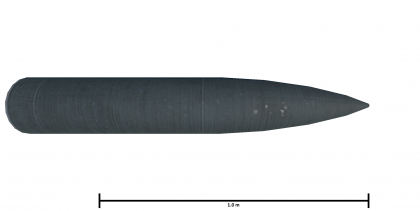Wfr.Gr.21
Contents
Description
Write an introduction to the article in 2-3 small paragraphs. Briefly tell us about the history of the development and combat using the weaponry and also about its features. Compile a list of air, ground, or naval vehicles that feature this weapon system in the game.
Vehicles equipped with this weapon
| Vehicles equipped with this weapon | |
|---|---|
| Fighters | Bf 109 G-6 · ▄Bf 109 G-6 |
| Fw 190 A-5 · Fw 190 A-5/U2 · Fw 190 A-8 | |
| IAR-81C | |
| Twin-engine fighters | Me 410 A-1/U2 · Me 410 B-1/U2 |
| Strike aircraft | Bf 110 G-2 · Bf 110 G-4 · ◐Bf 110 G-4 · Me 262 A-1a/Jabo |
General info
The Werfer-Granate 21 rocket launcher, also known as Wfr.Gr.21, was a weapon used by the German Luftwaffe during World War II and was the first on-board rocket placed into service by the Luftwaffe, first introduced in mid 1943. The weapon was developed by Rheinmetall-Borsig under the leadership of Dipl.-Ing. Rudolf Nebel, who had pioneered German use of wing-mounted offensive rocketry in World War I with the Luftstreitkräfte.
Effective damage
Describe the type of damage produced by this type of rocket (high explosive, splash damage, etc)
Comparison with analogues
Give a comparative description of rockets that have firepower equal to this weapon.
Usage in battles
Describe situations when you would utilise this rocket in-game (vehicle, pillbox, base, etc)
Pros and cons
Summarise and briefly evaluate the weaponry in terms of its characteristics and combat effectiveness. Mark pros and cons as a list.
Pros:
Cons:
History
The tight formations flown by USAAF heavy bombers allowed their defensive heavy machine guns to provide mutual cover to one another, and such a combat box was an extremely dangerous environment for a fighter aircraft to fly through, with dozens of heavy machine guns aimed at attacking Luftwaffe fighters from almost every conceivable direction. This led to numerous efforts to develop weapons that could attack the bombers outside the nominal 1,000 yards (910 m) effective range of their defensive guns.
This weapon enabled the German pilots to attack their bomber targets from a safer distance of over a kilometer, where the risk of being hit was much reduced. While a single fighter's payload of two or four such rockets was extremely unlikely to score a hit, a mass launch by an entire fighter squadron (a Staffel of 12-16 aircraft) as it arrived to intercept the bombers would likely score two or three hits, about 15% accuracy. The rocket's huge blast radius also compensated for inaccuracy, and even a non-lethal hit on a bomber by a showering of shrapnel would have psychological effects and perhaps cause it to take evasive manœuvres that would drive it from the protection of its fellows.
JG 1 and JG 11 were the first front line units to utilise the weapon during the spring of 1943. During the autumn of 1943 the Bf 110 G-2 Zerstörer of ZG 26 and ZG 76 were also equipped with it.
These weapons were also sometimes used against ground targets from late 1943 onwards, such as in the Italian campaign 1943–44, the 1944 Normandy campaign and during the Ardennes Offensive.
Media
Excellent additions to the article would be video guides, screenshots from the game, and photos.
See also
Links to the articles on the War Thunder Wiki that you think will be useful for the reader, for example:
- reference to the article about the variant of the weapon;
- references to approximate analogues by other nations and research trees.
External links
Paste links to sources and external resources, such as:
- topic on the official game forum;
- encyclopedia page on the weapon;
- other literature.




